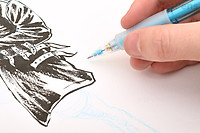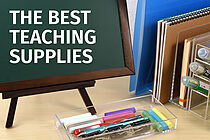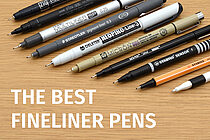| Term |
Kanji |
Furigana |
Definition |
| Chūji |
中字 |
ちゅうじ |
Medium print. Typically used for medium nibs or brushes. |
| Diary |
|
ダイアリー |
An English loanword that is commonly used in Japan to refer to planners. |
| Etegami |
絵手紙 |
えてがみ |
Based on the words for “picture” and “message.” Etegami is a Japanese folk art involving simple drawings and a brief message. The philosophy of etegami is to be spontaneously thoughtful. It’s generally done on postcards, which are easily mailed off to friends. |
| Flake |
|
フレーク |
Die-cut stickers. |
| Free |
|
フリー |
You’ll often see Japanese planners labeled as “free” when they’re undated. |
| Fude |
筆 |
ふで |
Brush. Fude (pronounced foo-day) shows up in many brush pens’ names, like the Tombow Fudenosuke. |
| Fureru (verb) |
振れる |
ふれる |
To shake. Pilot Fure Fure Pencils get their names because you shake the pencil back and forth to extend the lead. |
| Futoji |
太字 |
ふとじ |
Bold print. Typically used for broad nibs or brushes. |
| Gansai |
顔彩 |
がんさい |
Traditional Japanese watercolors. Gansai watercolors are pigmented and opaque. |
| Gokuboso |
極細 |
ごくぼそ |
Superfine or extra fine. You’ll often see brush and fountain pens labeled with this phrase. |
| Hosoji |
細字 |
ほそじ |
Small print. Typically used for small nibs or brushes. |
| Iro |
色 |
いろ |
Color. It appears in Pilot Iroshizuku, which translates literally to “drops of color.” Sai (彩) also means “color.” |
| Kira |
|
キラ |
Kirakira is a mimetic word for something twinkling or sparkling. |
| Knock (verb) |
|
ノック |
To press down on a button and extend the pen tip or pencil lead. The push button itself is often called a “knock button.” In English, it’s usually referred to as a “clicker.” |
| Kuru |
|
くる |
The Uni Kuru Toga Mechanical Pencil gets its name from the mimetic word くるくる (kuru kuru), which is the sound of something rotating or spinning, and 尖る (togaru), a verb that means “to taper.” When combined, you may imagine something rotating to a point, which is exactly what the Kuru Toga mechanism does. |
| Togaru (verb) |
尖る |
とがる |
| Maki-e |
蒔絵 |
まきえ |
Sprinkled picture. A traditional Japanese art form in which metal powders are sprinkled onto a lacquered surface. The metallic powder can also be applied using brushes or sponges. Maki-e artisans spend months honing their craft, and a single maki-e artwork can take months to complete. See urushi for more information. |
| Manga |
漫画 |
まんが |
Japanese comics. Manga covers many genres (including action, mystery, and romance) and are read by people of all ages. |
| Mangaka |
漫画 |
まんがか |
A manga artist. |
| Mensō |
面相 |
めんそう |
Face. A mensō brush has a fine tip that’s suitable for detailed work, like small facial features. |
| Raden |
螺鈿 |
らでん |
A technique in which small fragments of ivory or shell (including mother-of-pearl, abalone, and eggshell) are embedded in lacquer objects. It’s often combined with maki-e. See urushi for more information. |
| Sarasara |
|
さらさら |
A mimetic word describing the feeling of a silky smooth object. The Zebra Sarasa Gel Pen has smooth-flowing ink. |
| Sharbo |
|
シャーボ |
The customizable Zebra Sharbo Multi Pen combines the words “sharp” and “ballpoint.” It can hold both ink and pencil refill components. |
| Sharp |
|
シャープ |
Originally an English loanword, “sharp” became a Japanese term for a mechanical pencil because it always has a point, unlike a wooden pencil. |
| Shikkari |
確り |
しっかり |
Tightly or securely. Kokuyo Campus Shikkari paper is textured so it grips the pen or pencil’s tip. |
| Shitajiki |
下敷き |
したじき |
Underlay. A flat, lightweight board that’s placed beneath a sheet of paper. It provides a smooth writing surface and prevents dents or marks from forming on the pages underneath. It’s also known as a “pencil board” or “writing board.” |
| Sign Pen |
|
サインペン |
Originally an English loanword, “sign pen” usually refers to a felt-tipped writing marker. However, it can be used to refer to any pen that was made for signatures. The Pentel Sign Pen was the first of its kind in Japan. |
| Sumi |
墨 |
すみ |
Based on the words for “ink” and “water,” sumi was traditionally made by grinding ink sticks on palettes. The powder would be mixed with water until it reached the right consistency. Today, pre-mixed sumi ink is sold in bottles for convenience. Most sumi inks are water resistant when dry. |
| Techō |
手帳 |
てちょう |
Based on the Japanese words for “hand” and “book,” techō means “pocket notebook” or “planner.” The versatile Hobonichi Techo can be used as a planner, journal, and more. |
| Urushi |
漆 |
うるし |
Japanese lacquer made from lacquer tree resin. Urushi is applied in thin layers, with each layer needing time to dry completely. During the lacquer process, decorative techniques like maki-e and raden may be applied. Urushi application is a time-intensive process because artisans complete each step by hand, so urushi fountain pens have high prices. |
| Washi |
和紙 |
わし |
A type of Japanese paper that was historically handmade using mulberry, bamboo, or rice fibers. Washi tapes are made by adding adhesive backing to washi paper strips. |
Note: A mimetic word (also known as an ideophone) imitates the sound of an action. For example, dokidoki (ドキドキ) is used for the sound of a heartbeat. Mimetics are very common in Japan, and are regularly used in everyday conversation.





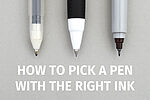
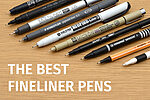

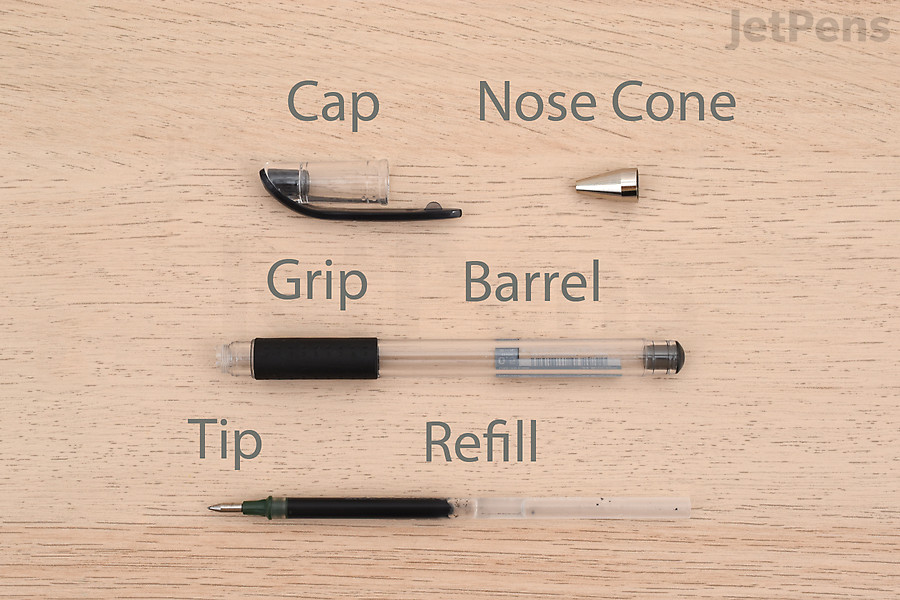
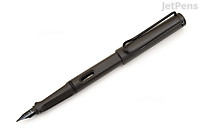 Post (verb)
Post (verb)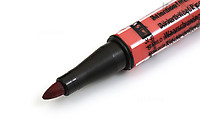
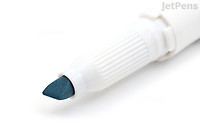

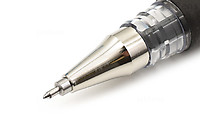
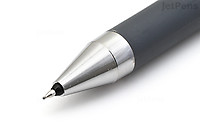 Synergy Tip
Synergy Tip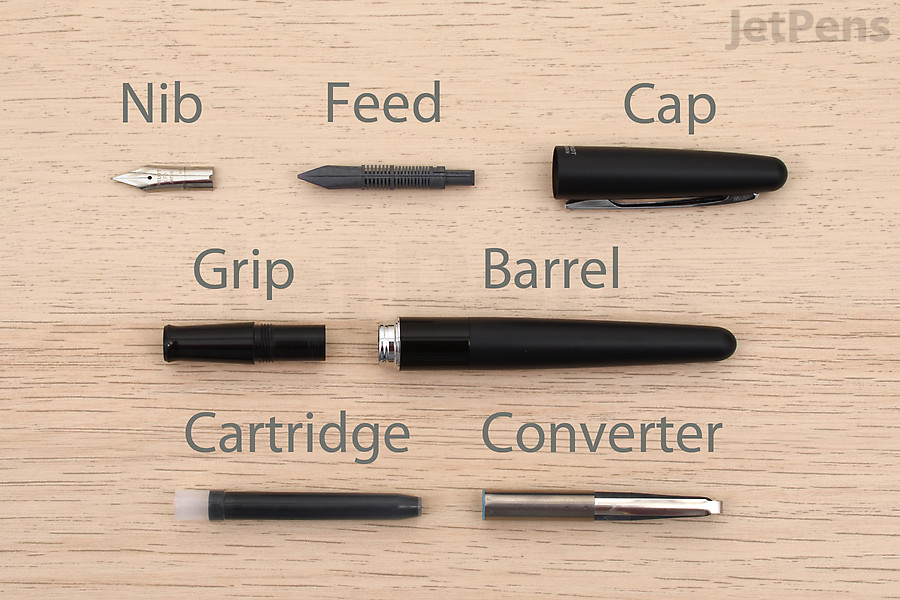
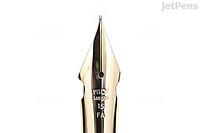
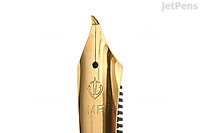
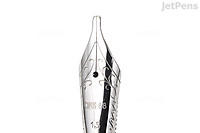
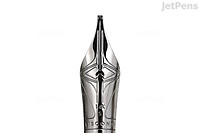
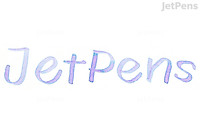 Dual Shading
Dual Shading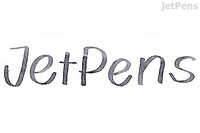 Shading
Shading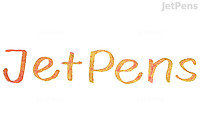 Sheen
Sheen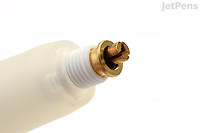 Chuck
Chuck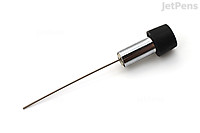 Clean-Out Rod
Clean-Out Rod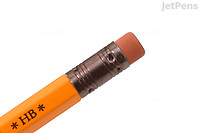 Ferrule
Ferrule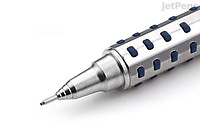 Lead Sleeve
Lead Sleeve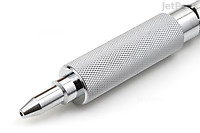 Knurling
Knurling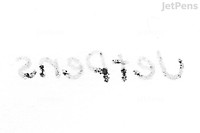 Bleedthrough
Bleedthrough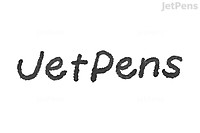 Feathering
Feathering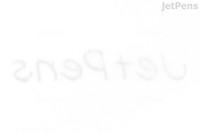 Showthrough
Showthrough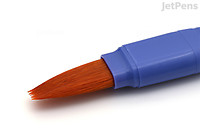
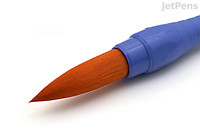
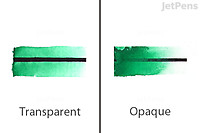 Transparent vs Opaque Watercolors
Transparent vs Opaque Watercolors